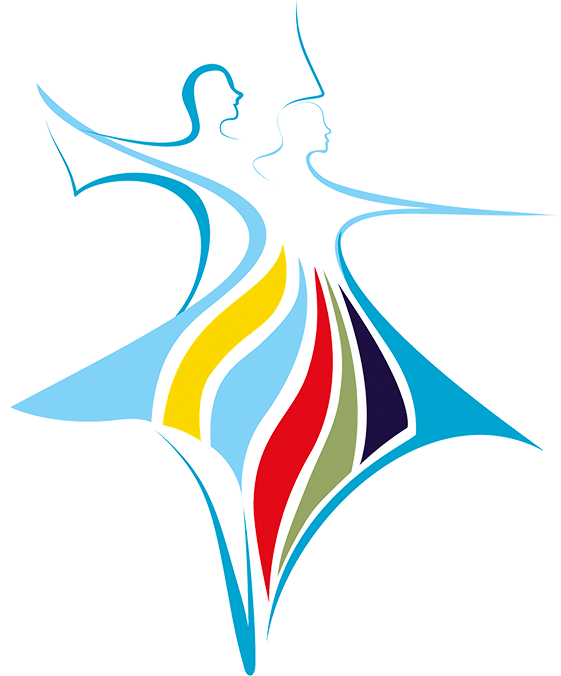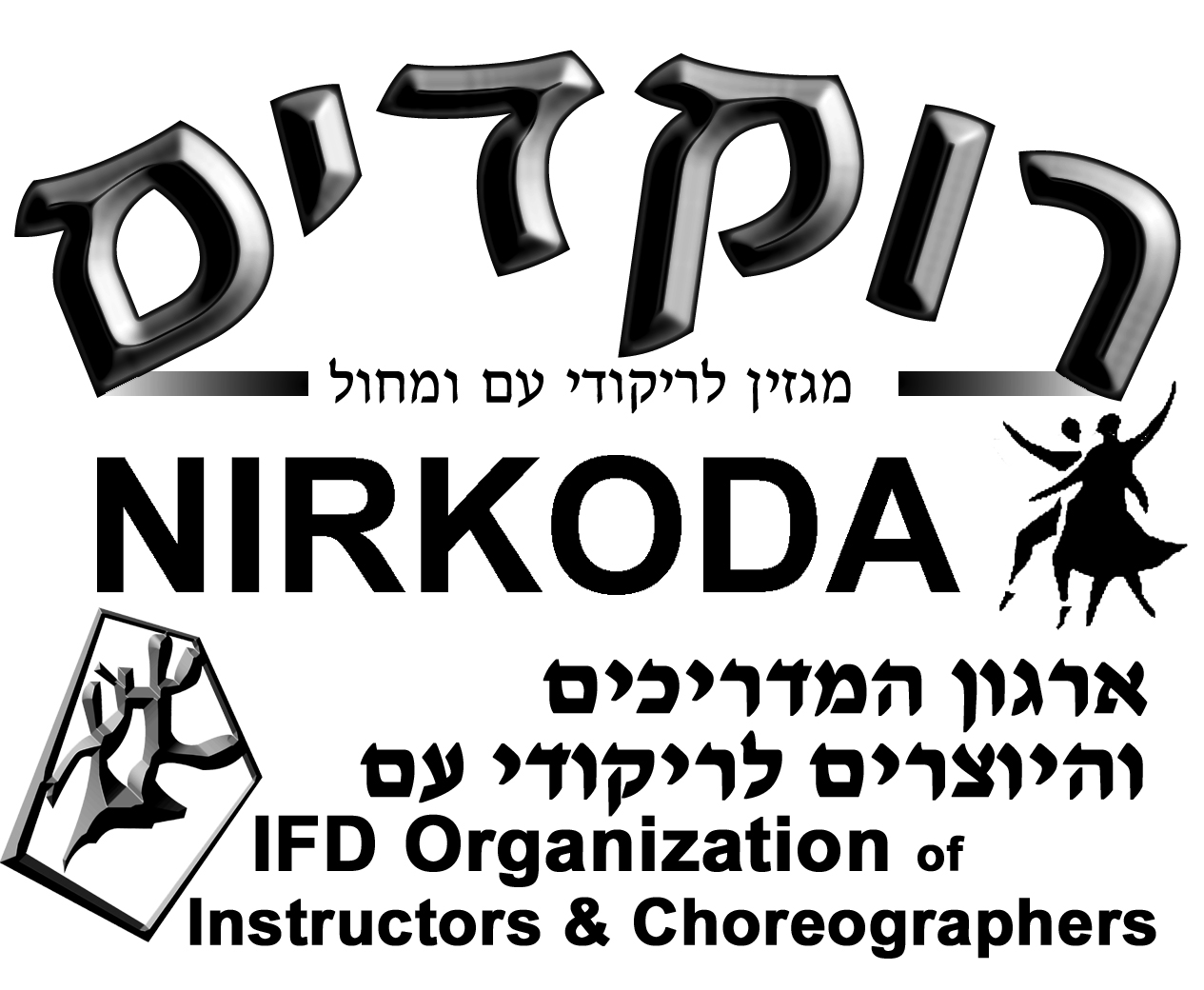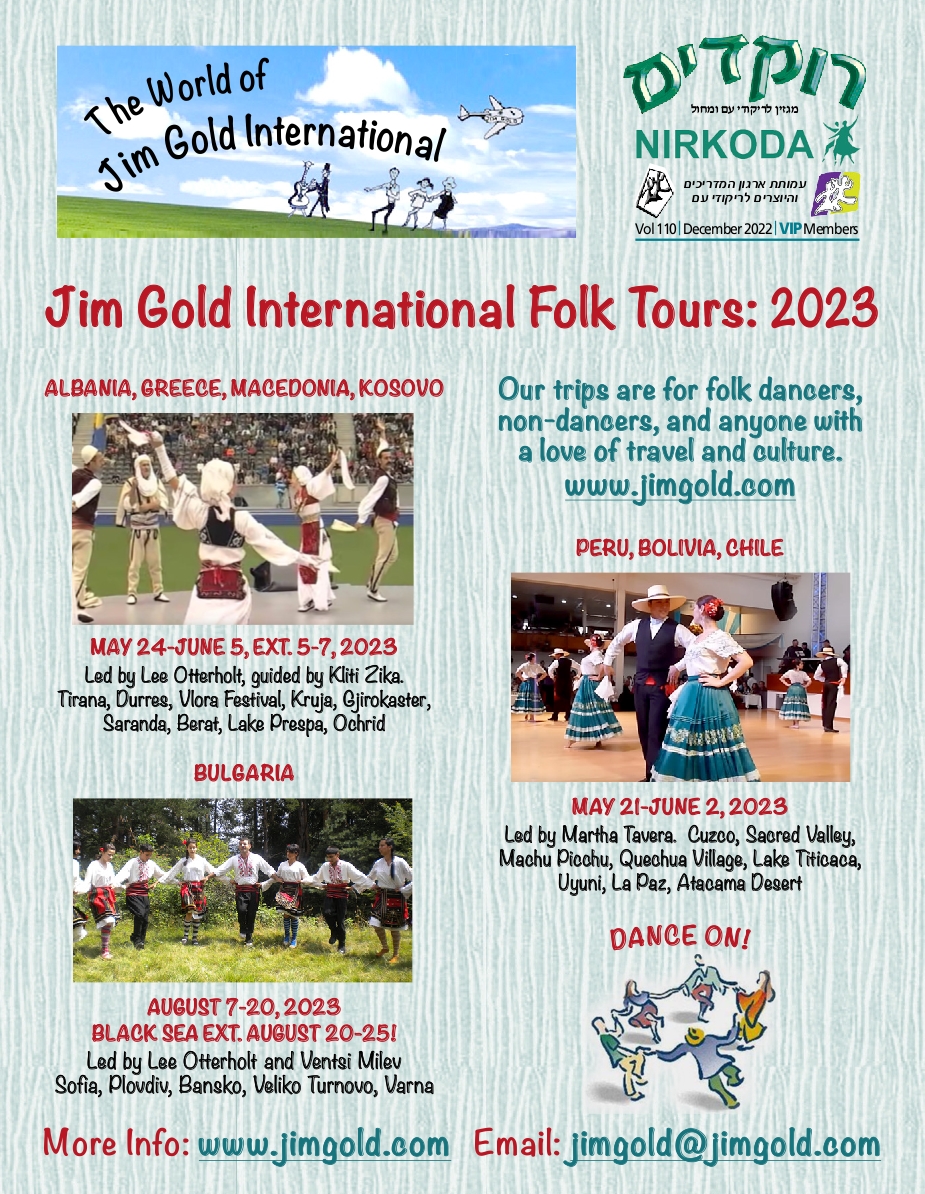- Home
- Rokdim Nirkoda 110
- Kurdion
For more than the past four decades, Shmulik Gov-Ari has enriched us with the hundreds of Israeli folk dances in many different styles that he has created. Utilizing Israeli folk songs, he has choreographed ethnic dances in both circle and partner formations.
Shmulik specializes in dances for the stage, directs performances for all ages and conducts Israeli dance training courses and camps around the globe. He is a truly a professional cultural ambassador of Israel in the field of Israeli and ethnic dance, as well as movement and folklore in all its diversity.
His works are influenced by the landscape of his childhood – from home, family and from the teachers (in the cheder) – “Na’ale, Na’ale”, “HaShemesh”, “Lechu Neranena”, “Nedunia” and others. The various ethnic groups with which he grew up led him to create “Debka Mimouna”, “Tchopi”, “Kurdion” and many other dances that are frequently done on the dance floors. Of course, the wonderful and beloved landscapes of the country (Israel) speak to his heart and have had an influence on his creative works, such as, “Nof BaGalil”, “Shir HaHaflaga” and “Yisrael HaYaffa”.
Many of his dances are folk dances in the full sense of the word, and it is impossible to describe an evening of dancing without “Silchi Li Yalda”, “Lakum Ve’La’amod”, “Eilat”, “Anavi”, “Stam Yom Shel Chol”, “Etz HaZayit” and many others.
The imprint of his original and special steps can be seen in his very diverse dances, “Essev Bar”, “Darbuka”, “Baraka”, “MiTof LeTof”, “Enchat Ha’Adama”, “Avraham Avinu”, and other dances that have inspired others to dare and venture into creating stylized dances full of new and special content that has never been seen before.
Shmulik began to dance when he was a child, from the time he studied in preschool and he created his first dance, “Letzan Katan – Little Clown”. He discovered folk dance when his older brother, Yaki, brought him to the neighborhood folk dance class. From there, he went to dance with Yankele Levy at Beit Katz, the legendary session, where he taught his first dances, “Sod HaMazalot – The Secret of the Zodiac”, “Yom Alef Ba’Shavu’a – The First Day of the Week” and “Ahavat Ha’Chayalim – Love of the Soldiers”.
What is it that is special about Shmulik’s way of working? He explains: “I tell stories through movement and try to incorporate the musical idea of the song and its lyrics through movement”. The principles that guide him when he choreographs his dances are to not outsmart, compromise or repeat what has been done before.
After completing his military service, he danced with “Lehakat Karmon” and went on a tour of Europe with them. Upon his return to Israel, he successfully started his own folk dance classes and performing dance troupes. He later applied to study Physical Education and Dance at Wingate College and upon graduating, he remained at the college to teach.
As a creative choreographer, lecturer and consultant, for many years he has been invited to participate in festivals and at dance settings all over the world. As part of his travels abroad, Shmulik was exposed to artists in the field of movement in every possible medium. This has influenced the way he works, for example, in his dances, “Nash Didan” and “Sahara Bar”.
Since the beginning of his work in the field, Shmulik has choreographed more than 600 folk dances in various styles.
Today, he lectures on folklore and movement, writes and uses original curricula for Jewish institutes around the world, especially in the United States and, of course, he frequently comes to our beautiful and dancing country – Eretz HaYaffa VeRokedet.
Shmulik’s dances can be viewed on the Rokdim website: https://bit.ly/3eAVGb3
About the dance, “Kurdion”:
Shmulik is strongly influenced by all forms of ethnic music. The song, “Kurdion” is Kurdish-folk; its original name is “Oyla Menoyla”. Shmulik first became acquainted with the song at a large party attended by ethnic musicians and dancers. He decided to create a simple dance that would not be difficult for folk dancers but that is filled with ethnic steps content from Kurdish folk dance.
His son, musician Itamar Gov-Ari, helped to arrange the song and edit it to be suitable for a folk dance. It was Itamar who came up with the name, “Kurdion”.
The fact that, in such a short period of time the dance has captivated every possible stage throughout the country and the world, indicates that there is a place for ethnic dances in the right dose and correct form.
You can watch the dance here: https://bit.ly/3yJ1gic
Dance Notation
Meter: 4/4
Music: Kurdish folk
Formation: Circle with hands joined
Structure: Chorus and two verses
Chorus Face center with hands joined at shoulder level, elbows bent.
1-4 Step R to rt., cross L behind R; repeat.
5-8 Open mayim step (grapevine): step R to rt., cross L over R, step R to rt., cross L behind R.
9-10 Sway R-L.
11&12 Moving CW: Quick step-tog-step crossing R over L accenting the last step with joined hands extended sharply downward and back bent slightly fwd.
13-14 Step L bwd, R to rt.
15-16 Moving CCW: Quick step-tog-step crossing L over R.
17-32 Repeat counts 1-16.
Verse 1 Face center.
1-2 Step R fwd toward center, accented pivot on R making ¼ turn rt. to face CCW (left shoulder to center).
3-6 Moving toward center: step on left heel, close R next to L; repeat the “heel-close”.
7-8 Step L fwd toward center, accented pivot on L making ¼ turn left to face CW (Rt. shoulder to center).
9-12 Moving toward center: step on Rt. heel, close L next to R; repeat the “heel-close” ending with ¼ turn pivot rt. to face center.
13-16 Four steps bwd moving towards the line of the circle beginning with R. Body is bent is bent slightly fwd. Arms accompany each step swinging to the opposite side; i.e., step bwd on R with arms swinging to the left, step bwd on L with arms swinging to the left; repeat.
17-32 Repeat Verse 1, counts 1-16.
Chorus:
Verse 2 Face center.
1-4 Two quick step-tog-steps moving fwd toward center: RLR, LRL.
5 Rock fwd onto R with bent knee and body leaning slightly bwd with weight of left foot on the ball of the foot; Rt. arm is raised with palm down and left arm is extended fwd with palm up.
- Rock back onto full left foot while bending slightly fwd with weight of rt. foot on heel; clap hands fwd with rt. hand over left.
7-8 Repeat counts 5-6 (rock fwd and bwd with clap).
9-12 Step-hop fwd on R toward center, two steps bwd toward line of circle: L,R.
13-16 Step-hop bwd on L beginning to turn left toward line of circle, complete the turn with two steps R,L to end facing center.
17-32 Repeat Verse 2, counts 1-16.
About the song: The words are in an ancient Kurdish language – a language that few are familiar with. It is a very rhythmic song with words that change according to the nature of an event such as a wedding, henna, etc.









Comments
התראות